Dounreay to become UK's first nuclear heritage project
14th December 2009
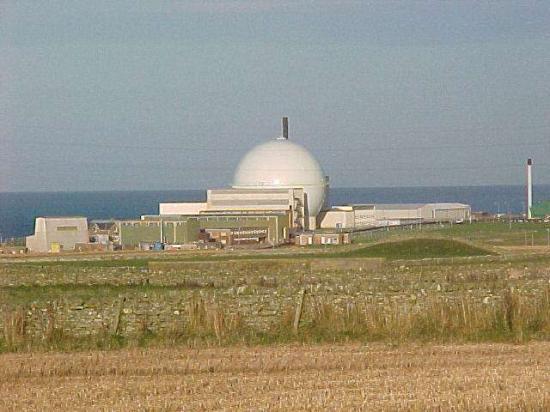
Within a few years, much of the experimental nuclear site at Dounreay will
disappear from the landscape.
Many of the facilities that have dominated the skyline of Scotland's north
coast for the past 50 years will be razed to the ground.
As the demolition of the entire site gets nearer, members of the public
will be invited in the near future to take part in a debate about which
aspects of Britain's abandoned experiment with fast reactors should be
preserved for posterity when everything else has gone.
The three-month debate early in the new year aims to identify opportunities
and discuss the options. It is expected to result in a heritage strategy
that will leave in place a legacy for future generations to interpret
Dounreay's significance in the industrial history of the last century.
It's the first time in the UK that a heritage strategy has been developed
for an entire nuclear site.
"The impetus stems from the consultation we carried out two years ago about
the 'end state' for decommissioning. This focused minds on the condition we
leave the place in when all the redundant facilities have been cleared
away," explained Doug Graham, environment team leader at Dounreay Site
Restoration Ltd.
"One of the recommendations was 'an open and transparent decision on the
future of the fast reactor sphere'. Discussions with Historic Scotland
around the same time lead us to believe we needed a heritage strategy for
the site as a whole. The heritage of the site is a lot broader and deeper
than simply one building and it's important we debate and explore all
aspects as part of this exercise."
All the redundant buildings at Dounreay are due to be demolished by 2025,
with more than 100 structures flattened already.
The only buildings needed after 2025 will be those required to look after
an estimated 15,000m3 of intermediate-level radioactive waste from
decommissioning and to exclude the public from tracts of land where
radioactive contamination will be left undisturbed.
DSRL hired Atkins Heritage to prepare a draft strategy that identifies
those aspects of the present site that are feasible to preserve, celebrate
or commemorate.
"Most buildings will be beyond economic repair, given their age and a
legacy of radioactive contamination," said James Gunn, the site's heritage
officer.
"But there are some aspects of the work that went on inside them that can
be preserved. It's important we explore what people want to see kept and
the draft strategy builds on some of the ideas that have come forward
already, such as relocating the fast reactor control room to a museum, 3D
computer models and capturing the memories of retired workers of the early
pioneering days. It's important, too, that the exercise considers cost
issues, who will look after saved items in the future and how."
A consultative document will be published and the public given three months
to make their views known. The feedback will help to shape recommendations
to the site's owners, the Nuclear Decommissioning Authority, next summer
Related Businesses
Related Articles
TAE Technologies and UKAEA partner to commercialise fusion tech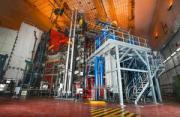
Joint venture to develop neutral beams for fusion and non-fusion applications, creating high-skilled jobs and establishing a critical supply chain. TAE Technologies, a leading US private fusion energy firm with over 25 years at the forefront of scientific innovation, today announces a bilateral and reciprocal investment commitment with the United Kingdom's national fusion laboratory, the UK Atomic Energy Authority (UKAEA) to commercialise TAE's proprietary particle accelerator technology for the global market.
Buried Hazards, Unfinished Business - What the NDA's 2025 Progress Report Really Tells Us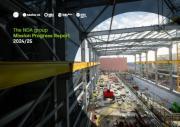
The Nuclear Decommissioning Authority (NDA) has released its 2025 Mission Progress Report is a slightly sprawling document chronicling one of the UK's most complex environmental undertakings. The safe dismantling of its early nuclear legacy.
New recruit officers join the Civil Nuclear Constabulary
The Civil Nuclear Constabulary (CNC) welcomes its newest recruits. The CNC hosted two passing out parades for the graduating Authorised Firearms Officers (AFOs) of Initial Foundation Programme (IFP) 106.
Dounreay's next generation of talent honoured by apprentice award
Nuclear Restoration Services Dounreay's Kate Thomson has won Modern Apprentice of the Year at the Highlands & Islands Apprenticeship Awards in Inverness. Kate, who is in the second year of her apprenticeship in commercial and quantity surveying, said she was thrilled by the honour.
Taskforce calls for radical reset of nuclear regulation in UK
Nuclear Regulatory Taskforce publishes final report and calls for radical reset of overly complex nuclear regulatory system. An overly complex nuclear regulatory system has contributed to the "relative decline" of the UK's ability to deliver faster and cheaper nuclear projects.
Funding approved for Wick Harbour port consultant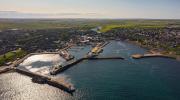
A specialist ports consultant has been appointed to develop a long-term strategic plan for Wick Harbour Authority (WHA) in Caithness. WHA has secured £47,775 from Highlands and Islands Enterprise (HIE) and the Nuclear Restoration Services, NRS Dounreay towards the cost of the services.
Fallon Campbell From Melvich Near Thurso Named As Apprentice of the Year At Awards In London
Rising star from North Scotland honoured at event to celebrate brightest and best in industry. An electrical apprentice from North Scotland is celebrating after being recognised for her contribution to industry at the 13th annual Engineering Construction Industry ECI Training and Development Awards in London.
The NDA Group Graduate Programme: more than a job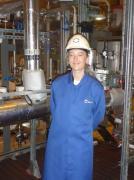
The NDA group graduate scheme offers far more than just a stepping stone into the nuclear industry; it's a chance to grow professionally, explore new places, and become part of a supportive community. Nuala Ledward, Assurance and Performance Graduate, shares how her secondment to Dounreay brought these benefits to life.
UKAEA develops 3D printing for fusion components
At its recently opened Central Support Facility (CSF), UKAEA has commissioned an electron beam additive manufacturing machine that can be used to incorporate tungsten into components, alongside a selective laser manufacturing machine. Fusion can play a key role in a global low carbon energy future.Advancing Fusion Remote Maintenance: Industry Collaboration Driving Innovation
As part of the Fusion Futures (FF) programme, UKAEA's Remote Applications in Challenging Environments (RACE) has partnered with industry leaders to develop two groundbreaking technologies for remote maintenance in fusion energy engineering. Thanks to FF funding, industry has taken the lead in maturing UKAEA technology concepts—delivering real-world solutions that enhance operational autonomy and reduce maintenance burdens in extreme environments.
